World Fine Art Professionals and their Key-Pieces, 486 – Martijn te Winkel
World Fine Art Professionals and their Key-Pieces, 486 – Martijn te Winkel
In WTC Art Gallery in Rotterdam I saw work by three Rotterdam artists: Martijn te Winkel, Arie van Geest and Eva Krause. I already knew two of them, Arie van Geest and Eva Krause, I interviewed them a few years ago (see elsewhere on this site). The third, Martijn te Winkel, had a series of paintings in which he tried to visualize music. A special project!
I spoke to him a week or two after the opening, with a nice opening speech by Hans Walgenbach. Arie van Geest turns out to have been Martijn’s teacher, he says. He was also involved in his admission to the Willem de Kooning Academy in 1994. “In my second and third year we got to know each other well. We also did a joint drawing project.”
Making the invisible visible
Martijn creates layered works that move between the abstract and the figurative. His paintings and works in mixed media are an expression of the process of making. Martijn: “I let go of the reflex to manipulate and let associations arise through the physical actions of painting and drawing. It is not only a physical process, but also a mental one, it has to do with consciousness. Getting into the right state to make the work is more important than producing the artwork. The physical process is elevated to a higher level through spatiality, by showing it to an audience. This gives the work more dimensions. That is the crux for me. Showing is an important part of the artwork.”
His works have an unpredictable character. He wants to make this invisible, associative process of creation visible. Although existing images can often be discovered in his works, they did not form the starting point. “The creation of new images is central. By reusing image elements by bringing them together or pulling them apart, an abstract visual language with a narrative character is created.”
Layered way of perceiving and working
Visual language is often superficial, he continues. “That is mainly due to the rise of the digital world. Everything is swiped left or right. Everyone has an image of art. My work is more conscious. I also have all kinds of images in my head. They come from the internet, from my own memory and I have images of the work of other artists. Over time I have developed a layered way of perceiving and working, it has become a habit. Layered works have a predictive effect. The production process makes new dimensions visible. The physical space becomes divisible in this way. Visual work is especially important because it takes on a different meaning over time.”
Does he have a key work?
He does, and it is hanging in the exhibition. It is the large, multi-coloured work entitled Peace Painting After Cello Concerto 2024, of Edward Elgar’s Cello Concerto (Cello Concerto in E minor, Opus 85). It is the last oil version of a series of works about the concerto. The Cello Concerto has four parts, and the first draft of the canvas was also in four parts. “I have listened to the CD of that concerto a few times a year since 1994. The version with Jacqueline du Pré is the best-known version.”
Based on Sol LeWitt’s Lines in Four Directions, he worked systematically. “All my work consists of a structure with 4 parts: 1) sketching, 2) hatching, 3) line drawing, 4) filling in planes. I need that structure. It is a physical process, in which the painting in progress had to relate to my body. How the conductor moves, that is the minimum space you need.”
Appreciation for Elgar’s concerto in the sixties
All of Elgar’s elements came together in the cello concerto. “He came ‘home’ tired after a long day of teaching. He played something at home, and his wife said: ‘that’s a nice tune’. The score contained titles that included the names of his friends. It is his most characteristic work. The first performances of the work were not well received, and it was only with the concert with Du Pré in the sixties that it was appreciated.” The piece is built around the cello. “It was an optimistic sound in the time of reconstruction. It takes you along in mood swings. There is constant repetition, which is nice for the drawing process. That’s how you arrive at a form. The recording lasts about 28 minutes, a good length for making the drawing.”
A work full of movement, sound and body language
On the painting we see ovals, circles and arches. “A string instrument evokes a wavy movement. The wavy movements cross each other, you see various crosses on the canvas. All four elements are in it. It does not come from the subconscious, but from consciousness. It is a conscious interpretation of Elgar’s work.”
The work is full of movement, sound and body language. You also see the structure of the music, with planes, a kind of keys. You see the color combinations, the yellow, a transparent yellow, against the purple. The colors have become more intense because of the oil paint. “Oil paint gives more space. There is a line of the horizon, you can see a landscape in it.”
The cello concerto can be interpreted anew every time, he continues. “There is enormous freedom in it. I had listened to the CD many times. But at a certain point I got the chance to listen to all kinds of cello music on October 29, 2022 in the BIM house. The cello was played by Jean-Guihen Queyras, partner of my niece, Annely, among others. Of all the Cello Concerto performances I have heard so far, I like this one the most. They express similar emotions, but Queyras’ performance is much clearer.” Since November 2022, Martijn has been working on the series of cello concertos in drawings with graphite and acrylic paint listening to Du Pré. “On August 16, 2023, I started the final piece in oil paint Peace Painting After Cello Concerto 2024. Constantly listening to Jean-Guihen Queyras. Coincidentally, Annely sent me a link that afternoon with a podcast that explains the meaning of the piece.”
https://podcast.app/elgar-cello-concerto-e337349348/?utm_source=ios&utm_
Will he be depicting more music in the coming years?
Someone recently asked if he wanted to paint live at a concert with improvisational jazz, ‘Music depicted’ on September 22, 2024 in the Holy Family Church in Rotterdam. “Improvisational jazz often contains solos, beautiful silences, but also a lot of expressive bustle. The church is around the corner from my studio, which is an excellent opportunity to create a work that depicts such an afternoon.” When he works, he always has music on. But no classical music, that has too many stroking and turning movements. He prefers to play pop music. That way he gets into a good working state. “You also have to be rested.” The creation process is a story in itself. He would like to paint the Canto Ostinato – with the sound of 4 pianos that are struck clearly by 8 hands for two hours.
Does he have any more key works?
He has two more: one is ‘Hocus Pocus Shift Focus’ (2015). He made it based on white, pulped papier-mâché. You see tree branches with birds and eggs in colours surrounded by 4 coloured stripes. They are parakeets. “People think: that is Matisse’s parakeet, yes, but it is also Daan van Golden’s parakeet, who abstracted the bird from Matisse’s work. ‘There is no competition in art’, Van Golden said. I have been using this bird figure in my work ever since I met Van Golden, in a guest lecture he gave in 1996. There are also sculptures of parakeet-like birds with the paintings in the exhibition. The eggs are after Andy Warhol and the branches after a photo by Wolfgang Tillmans. The stripes after an interpretation by Sigmar Polke.”
The other key work is Infinity Target, the outline of a parakeet in blue. A small oil painting, again with branches and eggs, another pattern with a symbolic element, an infinity loop added.
How long has he been an artist?
“I graduated in 1997 from the Willem de Kooning Academy, cum laude 1997 and the name change of the Rotterdam Academy of Visual Arts was coming up. De Kooning’s daughter gave permission to use the name from 1 January 1998. Willem de Kooning made two leading art statements for me. 1. An image that you make must be perceived as if in a flash. The execution takes longer. 2. When you look at a work it must be quiet, if you can imagine that the work vibrates it is not good work. Unfortunately, the Academy no longer has an autonomous department.
I had the feeling that I was an artist before, especially in the second year. Two or three years after graduating I was sure: ‘I will remain an artist for the rest of my life’. I was 27 at the time. That was because I knew that I would continue to develop.”
In addition to his art work, Martijn has been a frame maker for 10 years and has worked for 5 years at the Kunstuitleen Rotterdam (Artlending Rotterdam). He intends to continue Walgenbach Art & Books as an art bookstore and meeting space when Hans Walgenbach stops in 2026.
Finally, what is his artistic philosophy?
“A work is never finished. You always discover new dimensions. A little humor in art can’t hurt. I found that perfectly expressed in the remark: ‘If you make art, you have to make sure you have something / nothing else to do.’” Art is the opposite of nature, but it is very dangerous because it develops organically. In that way, it also has something natural.”
Images
1)Peace Painting Afther Cello Concerto 2024, 2) Infinity Target one shot only bull, 3) Hocus pocus shift focus, 2015, 4) self portrait Martijn te Winkel
https://www.martijntewinkel.nl/
https://www.instagram.com/_marti._010/
https://www.wtcrotterdam.com/artgallery
https://inzaken.eu/2024/08/06/martijn-te-winkel-schildert-elgars-celloconcert/
Disclaimer: The views, opinions and positions expressed within this guest article are those of the author Walter van Teeffelen alone and do not represent those of the Marbella Marbella website. The accuracy, completeness and validity of any statements made within this article are not guaranteed. We accept no liability for any errors, omissions or representations. The copyright of this content belongs to Walter van Teeffelen and any liability with regards to infringement of intellectual property rights remains with the author.

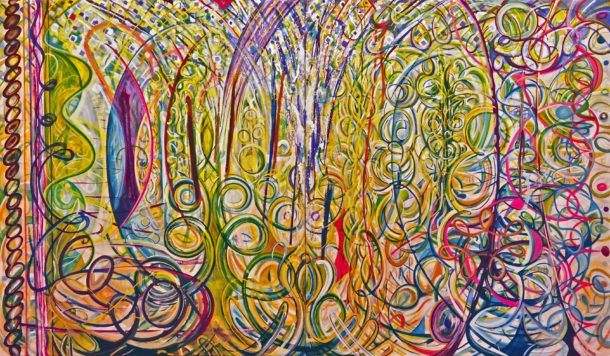

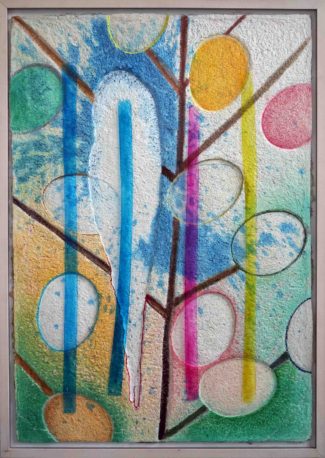
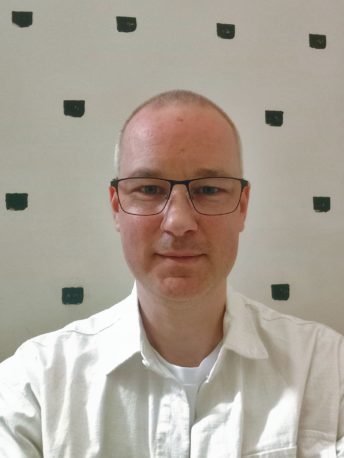



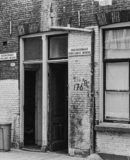

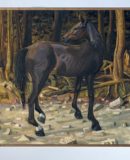

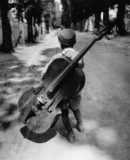




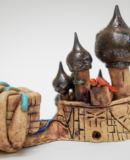

The opinions expressed by individual commentators and contributors do not necessarily constitute this website's position on the particular topic.